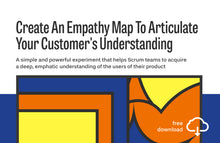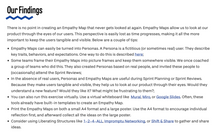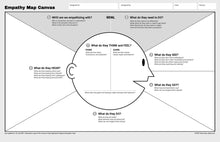
In our work with Scrum teams, we find that many don't know where to start. Or worse, they give up and resign to the situation. In this series, we offer a toolbox of tried-and-tested experiments to improve together.
How does this help your team?
Building awesome products requires a deep, emphatic understanding of your users. What do they need? What drives them? How do they experience a particular product or process? In this experiment, we explain how to use Empathy Maps and interviews with users to build this understanding.
Empathy Maps are a simple, powerful tool to build an understanding of your users. It is no wonder that they are the nuts and bolts of UX designers and are commonly used in Design Thinking. The name derives from ‘Empathy’, which refers to the ability to understand what another person feels and thinks. A search on Google yields many different templates, but we find the one by Dave Gray the most practical and complete.
You can create one Empathy Map for all users or multiple maps for different segments or individual users. In any case, the best Empathy Maps are based on real data. Not on conjectures or assumptions that you make as a team. This means that a good Empathy Map requires that we go out there and talk with real users.
Give it a try and let us know how it went!
What do you receive?
- A 8-page full-color guide (PDF).
- We take you through the flow of the experiment in great detail.
- The PDF outlines additional resources and useful reading, both to prepare and to distribute afterward.
More inspiration
- Get our book the "Zombie Scrum Survival Guide";
- Explore our paper "10 Powerful Experiments to Overcome Zombie Scrum"
- Read our whitepaper where we explain the Scrum framework, and its principles and values, in our own words.








